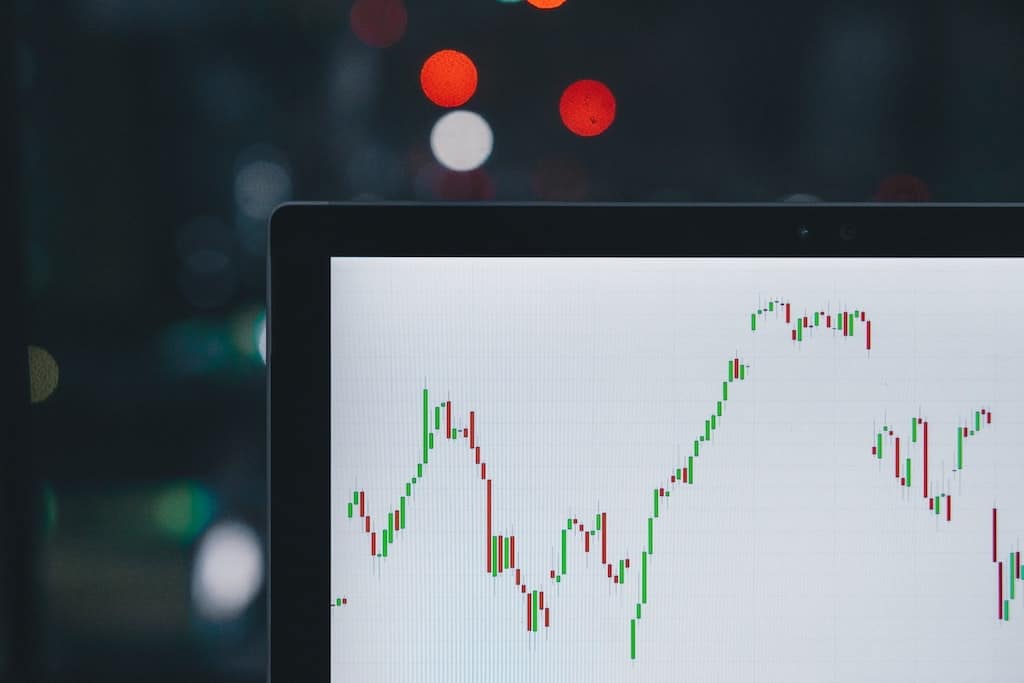The Complete Guide to ETF’s That Every Investor Needs

This post may contain affiliate links. I only recommend products I trust or personally use. Please read our disclaimer for more info.
If you have started looking into investing or have been back and forth on the idea of actually putting your money into the stock market than you have probably heard someone say the acronym “ETF”. And if you haven’t heard it then you probably have read it somewhere and wondered… “WTF”… is that?
You may have asked someone you know and they tried to give you their best explanation of it.
But at this point, you’re realizing asking your good buddy Mike (or Mikayla for our lady readers out there, or whoever you asked) probably didn’t help much since they didn’t do a very good job of explaining it (nothing against my Mike’s and Mikayla’s out there, your name was randomly chosen).
So, you just nodded your head when they were telling you all about how they work and you just pretended you knew exactly what they were saying.
Now, you’re probably wondering why you ever ask them anything, because they just seem to mutter out incomprehensible nonsense and never want to help you actually understand things. They just want to sound smart. (huh, this is getting deeper than I thought, you should really evaluate your friendships…)
ANYWAYS… Let’s get this show on the road. I got things to do, cookies to eat, and videos to make. (That’s right guys! I’m working on the YouTube channel and looking forward to getting some video content up to help educate more and more people and make things a little more interesting for my visual learners out there! You can subscribe to the newsletter at the bottom of the post and I will keep you updated on that)
Well, the truth of it is, you’re at least on the right track because learning more Information about the stock market and investments in general, is so important. I think everyone should know about ETF’s and exactly how they work, so today. I’m going to make sure we clear it all up.
So let’s jump right into this thing.
What Is An ETF?
The term ETF stands for “Erecti… (whoa whoa. Sorry, that’s the wrong term, I was reading something on my desk here.) It actually stands for “Exchange Traded Fund”.
What this simply means is that the fund is traded on an exchange like the Nasdaq or New York Stock Exchange. (Hence the name)
Not so complicated huh?
Lucky for my people who already have experience trading individual stocks of some sort, you will find that buying and selling an ETF is extremely similar. They are traded on the exchange in the exact same manner.
Now, for the fund part. (HA. Couldn’t help myself on that one)
An ETF is a collection of many stocks or bonds (anywhere from 10-1,000+) that have been allocated into one purchasable “fund”. They track an index, or a group of assets like commodities, currencies, and real estate.
A great way of looking at this is imagining you have a basket (the fund).

In that basket, you are putting individual stocks. Then, you allow people to buy shares of this entire basket. With every share a person buys of this basket of stocks, they are purchasing a portion of every individual stock put into it.
So why should you want to invest in an ETF instead of investing in other individual stocks and bonds?
The most important reason for investing in an ETF is that it is less risky than investing in individual stocks, yet you can expect similar or even better returns in the long term. The reason for this is “Diversification”.
Diversification allows poor performances of some investments to be, in lack of better words, “canceled out” by your investments that are performing well. To better understand this let us look at an example.
Say you purchase 40 shares of Apple at $125 (A total of $5,000). If technology were to take a huge hit or AAPL was to make a bad business decision and the share price dropped 20%, your invested value would also drop by 20% because all of your money is in Apple. (This would drop your investment value by $1,000)
On the other hand, if you take those same $5,000 dollars and invest it in an ETF (we will make up our own for this example and call it “PLZ MAKE MONEY”) that held 5 stocks with an equal holding of each stock (most ETF’s actually hold higher percentages of certain stocks and lower percentages of others to further balance the risk, but this is just for the sake of example). We will just say this fund holds Apple (AAPL), Pfizer (PFE), McDonald’s (MCD), Coca-Cola (KO), and Chevron (CVX).
So, buying $5,000 worth of the ETF “PLZ MAKE MONEY” (I’m laughing because I just know one of you readers are going to try and find this ETF on the exchange…) will ACTUALLY get you a total of –
$1,000 of AAPL
$1,000 of PFE
$1,000 of MCD
$1,000 of KO
$1,000 of CVX
This is still not great diversification, remember, Yoda once said “5 stocks a portfolio does not make…” or something like that. (Just for my die-hard Star Wars nerds out there, I know he didn’t say this, it’s just a joke.)
So, if in like the previous example, AAPL was to suffer that 20% loss while you were invested in that ETF, and the rest of your stocks performed well enough to not have any losses but also not any gains, your investment value would only go from $5,000 to $4,800.
Even more importantly, on the other hand, if the remaining stocks were to perform well enough to average a 26% gain combined then you would actually have a positive return for the year. Even with the 20% loss sustained with AAPL.
THIS IS WHY DIVERSIFICATION IS KEY.
By buying a broad ETF you are allowing yourself to not be affected so strongly by specific market sectors having a bad year. I talk a lot about this in the article How to divide up your investment portfolio to achieve killer returns. I talk about how many different sectors you should be invested in and the ideal way to split up your money.
So you get why you should buy an ETF and what they are… but now you’re wondering well how the heck does an ETF actually work. Things like… Where do they pick the stocks that go into it and why? So, let’s cover that next.
What is in an ETF and how to find out what you’re getting when you buy one?
There are ETF’s for almost everything you can think of investing in. For example, you can buy an ETF that just focuses on high dividend stocks like the Vanguard High Dividend Yield ETF (VYM) or the Schwab US Dividend Equity ETF (SCHD).
Or maybe you want to invest in some REIT’s but don’t know which one you should buy? Vanguard offers a REIT ETF that holds many properties (VNQ). Heck even if you want to invest in the cannabis industry but you feel it’s too risky to buy just one company, there is an ETF for that, the ETFMG Alternative Harvest (MJ).

Forbes actually put together a great list of the best ETF’s of 2018 and they update it according to the year, some of which you can check out below.
ETF’s are managed funds and sometimes the allocations or stocks held inside of the fund can be changed based off of the market. To find out what stocks are held inside an ETF you can usually just type the ticker symbol into google followed by the word “Holdings”. For example, typing in “VOO holdings” will tell you exactly what the ETF has in it.
Doing this will also help you to find out the percentage of each holding inside of the ETF as they all typically hold different amounts of each company within the ETF. I wouldn’t worry too much about this, as long as the ETF’s objective is to achieve what you are looking for. (such as income, clean energy investing, aggressive growth, etc. )
So, now we’re moving along nicely. You now understand what an ETF is, how to find out what’s in it. But there are some things you still don’t get. Like, How do ETF’s make money and what does it cost to invest in an ETF? So let’s knock that out next.
How much does it cost me to invest in an ETF?
Well as you know by now, everyone has to make their money. ETF managers are no different, they spend much of their time actively managing and analyzing the performance of an ETF to try and achieve the best results for the investors, and they do deserve to be paid for this. ETF’s have expense ratios just like most other managed funds and you can usually find these easily while researching a specific ETF.
Most ETF’s have minimal fees and they can actually help you to save thousands of dollars through the years versus many other investment options.
You have to be aware of high expense ratios with other investment vehicles and even with some ETFs. It is always a good idea to take a look at the expense ratio of an ETF before buying into it.
Not only are the fees with ETF’S generally extremely low, but a lot of brokers that charge you for trades generally will wave commissions for investing in ETF’s that were created by the brokerage you are using. Which can save you thousands of dollars over time as well, just as we mentioned before in 5 concealed costs that destroy your investment returns.
You may never even notice these fees being taken out as they are handled by the ETF’s parent company. The value of the asset, (also called the Net Asset Value) (NAV) is adjusted on a daily basis to account for these small fees.
So simply put, the management fees for investing in an ETF are already reflected in the value by being adjusted downward to find the Net Asset Value and aren’t something you should ever expect to be taken out of your investment balance in a lump sum. In other words, If an ETF returned exactly 0% over the course of the year than you would slowly see your balance decrease over time. Not all at once.
Next, let’s address some minor differences you should understand when investing into an ETF. Like, dividend payouts.
How does an ETF payout its dividends?
A lot of times an ETF holds shares of stocks that pay out dividends. In this case, ETF’s still pay out the full dividend amount, but do so by holding all paid out dividends until each quarter. This allows them to accumulate for the duration of the quarter before paying them out to shareholders.
Most ETF’s dividend yield can be found while researching a fund and you can know what amount and when your dividends should be paid to you.
Final Thoughts on ETF’s
The effect that an ETF can have on your portfolio is one that should not be overlooked and should be researched as thoroughly as possible. ETF’s have become an increasingly popular way of investing in the last few years and they have been widely praised by many investment professionals like Warren Buffet.
Look, honestly, guys, don’t be dumb. Diversify. Or DIE. (well, I mean odds are you probably won’t die, but like, still it’s pretty serious) Diversification can make all the difference in the world when it comes to investing and can really help to stabilize your investment portfolio.
Whether you decide to choose an ETF or a mutual fund (which I will explain more about later) or just individual stocks, always be sure you are diversified.
If you guys are looking for great resources for finding quality ETF’s, then investment brokerages are going to be some of your best bets. I personally think Vanguard and Charles Schwab offer some of the best ETF’s available and you should consider checking them out.
And in the meantime, I’d love if you could subscribe to the blog and stay updated on all the awesome things I am working on for you! Thanks for reading!
Until the next one,
Noah
[convertkit form=776920]

Hey! I'm Noah Riggs.
Noah is the founder of Busy Living Better and has built a life he loves, despite growing up poor. He shares exactly how he started his six-figure business, became financially stable, and lives his best life so that he can help you do the same. You can read more about how he did all of this before the age of 23!
